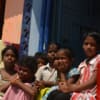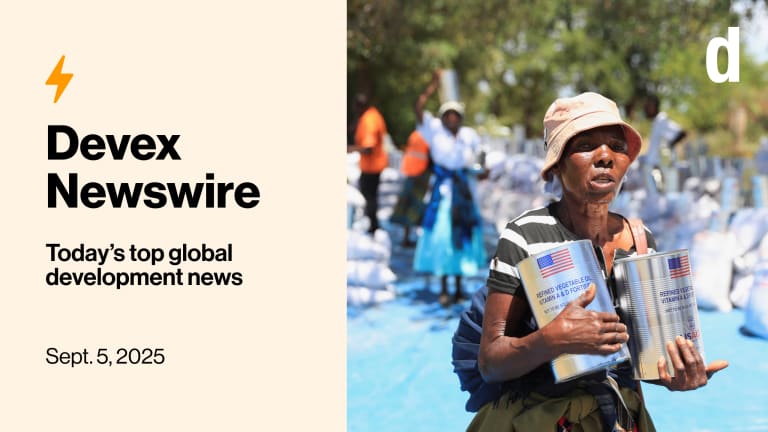
At the height of the Ebola outbreak, in September 2014, United Nations Secretary-General Ban Ki-Moon met with the Security Council to announce a “system-wide organizational crisis response mechanism” that could respond to the “unprecedented” health crisis. In the following months, with the death toll eventually rising to more than 11,000, the World Health Organization launched a $100 million emergency crisis program. More than just a fund, it was a programmatic shift, allowing for the WHO to become operational, quick and nimble in a moment of global catastrophe.
Two years on, however, the world is missing health crises many magnitudes larger than Ebola because of an inability to recognize the impacts of cumulative exposure to a changing environment, said Gerard Finnigan, a regional health and nutrition advisor for South Asia and Pacific at World Vision International.
Speaking at the inaugural Asia Pacific Humanitarian Leadership conference last week, Finnigan said the global community has yet to address a discrepancy between the actual and perceived impact of health events.
Innovation in humanitarian response: A must-have with disclaimers
With growing global displacement and shortfall in funds available to provide humanitarian response, innovation is seen as the vessel that could be the difference between the sector sinking or swimming. But without properly scoping and understanding the impacts of new technology, it can do more harm than good. At the inaugural Asia Pacific Humanitarian Leadership Conference, innovation was a hotly debated topic.
In 2015, the earthquake in Nepal, and a series of heat waves in France, India, Pakistan and Belgium, accounted for the top causes of natural disaster deaths according to the Centre for Research on the Epidemiology of Disasters. Cumulatively, some 16,000 people died from those incidents. But those deaths represent a drop in the bucket compared with cumulative exposure-related deaths. The same year, noted Finnigan, haze from agricultural fires in Indonesia may have led to 100,000 premature deaths. Across Southeast Asia, 3.8 million premature deaths can be traced to air quality. In China alone, 4,000 people die each day from pollution-related illnesses.
“Cumulative exposure represents the greatest health threat for people,” said Finnigan. “We need to start responding to cumulative exposure health emergency disasters … we need to change the current [WHO] Emergency Response Framework model. It requires adaptations.”
By keeping the focus narrowly aimed, argues Finnigan, the current WHO ERF misses the forest for the trees.
“Our system is not well placed to deal with the cumulative effects of environmental hazards,” he told Devex. “This would require a new and innovative approach in order to provide a clear framework response to a country in need, to provide the trigger mechanisms for that country and then to provide an operational response to that country. Because unlike an infectious disease outbreak, and unlike an acute disaster that causes a surge in hospital and ambulatory care, cumulative exposure events require an ongoing monitoring, the ongoing provision of advice, the ongoing provision of local care and that’s a complex operational response for anyone to deliver.”
Finnigan calls the new WHO Health Emergencies Program historical, and said he believes it to be an ideal time to extend focus to create similar systems to address cumulative exposure health emergencies. He’s currently in the process of advocating for an innovative proposal to present to the World Health Assembly and is urging other humanitarian groups, governments, the private sector and ‘non-traditional actors’ to join his efforts.
“In order for us to mitigate risk and reduce risk, we’ll have to approach this from as many possible directions as we can. Enabling change will occur through the World Health Assembly’s determination, and so it would be my hope that all actors in the humanitarian space can collectively work on a proposal submitted to the World Health Assembly to identify this as a major issue that fits clearly and fits perfectly with their initiative within the world health emergency program. Should that happen, then I am absolutely confident that we’ll be in the best position to respond in the following months, years and decades, because that’s the period of time in which we’ll need to be able to respond to this crisis emergency that’s with us right now.”
Devex is the media partner for the inaugural Asia Pacific Humanitarian Leadership Conference. Follow discussion from the conference on Twitter using #bethechange.








